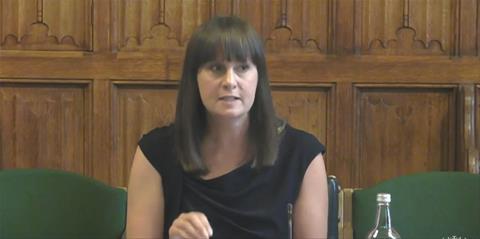Kate Henderson says section 106 replacement needs to ensure homes can be built in low-value areas

The government’s proposed infrastructure levy may make building enough affordable homes unviable in some areas, Kate Henderson has warned MPs.
The chief executive of housing association trade body the National Housing Federation told a select committee yesterday that the new charge proposed in the levelling up and regeneration bill, which is based on the values of completed schemes, may not be effective in some areas.
Henderson said: “[For] those areas which have lower land values [in] some parts of the country, it may not be viable to deliver sufficient levels of affordable housing and other things the community needs.”
She said the government’s proposal to stagger the levy’s introduction through a “test and learn” approach should make “sure it does work in areas of low land value”. But she added: “Where viability is compromised, that is then the role of our national regeneration agency”.
The government is proposing to sweep away the section 106 system, under which developers negotiate with local authorities about the percentage of affordable homes in developments and other community benefits.

Instead, developers will pay a charge based on the gross development value of completed schemes set by local authorities. The legal underpinning of the charge will largely be based on the soon to be scrapped Community Infrastructure Levy (CIL) – a charge local authorities can set to raise funds to help fund infrastructure.
Andrew Wood, spatial planning lead at the Campaign to Protect Rural England, said: “Anywhere with currently low CIL levels will have the same problem as the infrastructure levy. The system as it stands is not providing for people’s needs and I don’t think the infrastructure levy will change that.
See also>> We must get the design of the new infrastructure levy right
See also>> Industry warns over complexity as Gove pushes ahead with infrastructure levy
“The revenue for infrastructure is also expected to provide affordable housing and I just can’t see how the revenue will be there.”
Ian Fletcher, director of policy at the British property Federation, said ‘billions of pounds’ of developer contributions are currently not being spent and said there should be a “use it or lose it” policy to ensure councils use the money.
Fletcher also said the bill as it stands is a “very sketchy outline of what the government is seeking to achieve without the detail”.
Henderson’s comments come just weeks after the launch of Housing Today’s A Fair Deal for Housing campaign to boost housebuilding. The campaign will look at the governemnt’s planning reforms and seek ways to ensure more affordable homes can be delivered through the new planning system.
A Fair Deal for Housing

Housing Today believes the government should not back away from its manifesto pledge of building 300,000 new homes a year by the middle of the decade. We badly need more homes, and a lack of supply is a major factor in creating problems of affordability for both buyers and renters.
Over the next few months, Housing Today will be exploring potential solutions to help us ramp up housebuilding to 300,000. These are likely to include different ways of working, funding asks of government and policy ideas that could boost housebuilding.
We want to hear from you: what do you think can make a difference at a policy level?
What can the industry do better?
We believe that, with the right commitments from ministers and the industry, it is possible to build more homes and help the government to meet its objectives to “build beautiful”, improve quality and safety, boost home ownership and level up the UK.










No comments yet